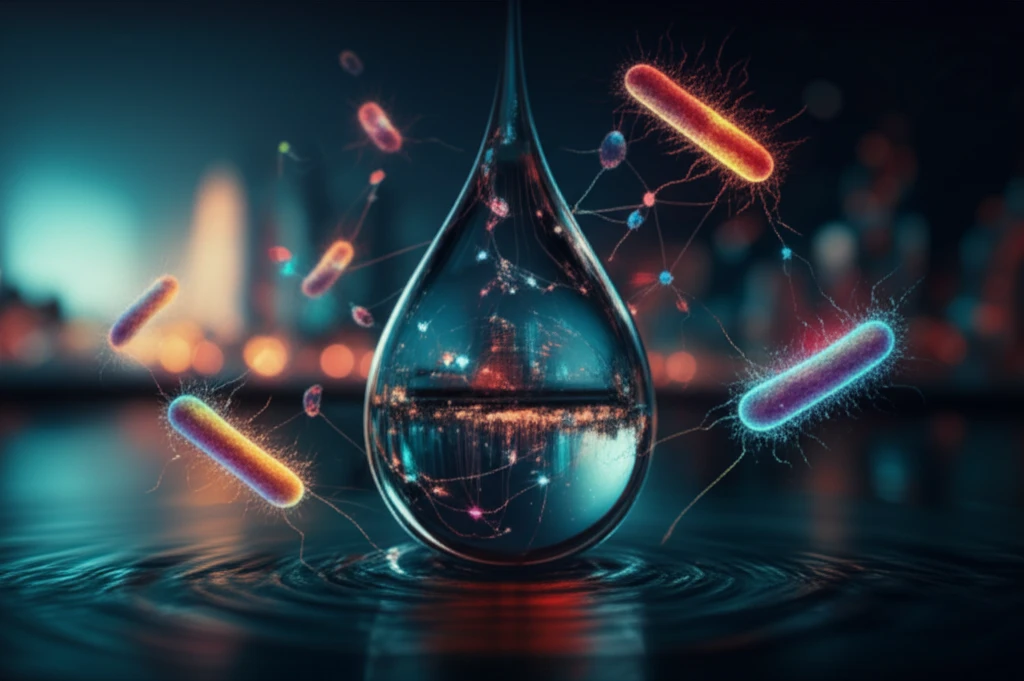
Turning Wastewater into Wonder: How Scientists are Revolutionizing Water Treatment
"A new study reveals how modeling the complex interactions of bacteria can unlock more efficient and sustainable wastewater treatment processes, paving the way for cleaner water and a healthier planet."
Wastewater treatment, while essential, is often energy-intensive and can produce unwanted byproducts. Traditional methods frequently rely on chemical processes that, while effective, may not be the most environmentally friendly or cost-effective in the long run. As global populations grow and water scarcity becomes an increasing concern, the need for more sustainable and efficient wastewater treatment solutions has never been greater.
Enter the world of microbial communities. Within wastewater treatment systems, tiny bacteria are hard at work, naturally breaking down pollutants. Scientists are increasingly turning their attention to understanding and harnessing these natural processes to improve treatment outcomes. The key lies in deciphering the intricate interactions between different types of bacteria and optimizing the conditions in which they thrive.
Now, a groundbreaking study has emerged, showcasing the power of advanced modeling techniques to simulate and optimize these bacterial interactions. This research offers new insights into how we can design and manage wastewater treatment systems to be more effective, sustainable, and adaptable to future challenges. Let’s explore how this innovative approach is set to revolutionize the field.
Unlocking the Secrets of Bacterial Behavior in Wastewater Treatment

The study, published in Biochemical Engineering Journal, delves into the use of a sophisticated mathematical model to simulate the simultaneous processes of anammox and denitrification. These are biological processes carried out by microbial communities in granular biofilms—essentially, tiny ecosystems within the treatment system. The goal? To achieve a kinetic and physiological characterization of these communities, providing a deeper understanding of their behavior.
- A novel stoichiometric matrix specifically designed for the anammox process.
- An approach to differentiate between major anammox species within the model.
- Extensive sensitivity and identifiability analysis of model parameters.
- Estimation of maximum growth rates (µmax) for Candidatus Brocadia and Candidatus Scalindua, two dominant anammox species.
The Future is Clear: Sustainable Wastewater Solutions Through Understanding
This research marks a significant step forward in our ability to understand and optimize wastewater treatment processes. By developing and validating a detailed biofilm model, the researchers have provided a powerful tool for:
<ul><li>Designing more efficient and robust wastewater treatment systems.</li><li>Predicting the performance of treatment plants under different operating conditions.</li><li>Optimizing the use of resources, such as energy and chemicals.</li><li>Developing strategies to mitigate the formation of unwanted byproducts.</li></ul>
As we face growing environmental challenges, innovative solutions like this are essential for ensuring a sustainable future. By harnessing the power of microbial communities and advanced modeling techniques, we can transform wastewater from a problem into a valuable resource, contributing to cleaner water and a healthier planet for generations to come.
